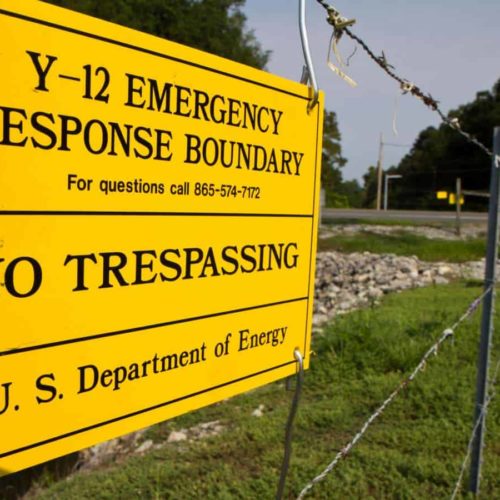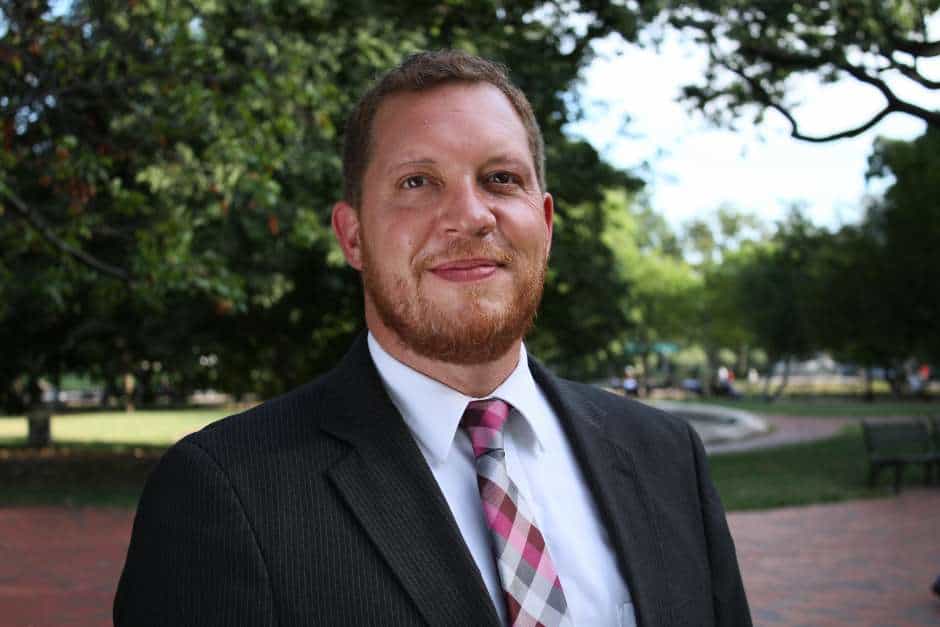Introduction
In June 2014, a worker at the Y-12 National Security Complex in Tennessee was surprised to find U.S. nuclear secrets inside a trash bag marked for disposal along with standard rubbish. Taking a closer look, the worker found 19 more documents in the bag that were either marked classified or were later determined to contain information that should have been labeled secret.
A dozen more bags of trash sat nearby, awaiting transport to an open landfill where Y-12 workers routinely dump garbage with no bearing on national security. When employees of Babcock & Wilcox Technical Services, Y-12, LLC, the contractor responsible for running the site at that time, poked inside two of these additional bags, they found more top-secret documents.
“(They) then decided not to search any additional containers because they were, given the prior results, presumed likely to contain additional classified information,” a preliminary notice of violation issued Feb. 2 by the Energy Department’s enforcement arm said.
Many of the records discovered that day detailed how the department’s employees and contractors worked with nuclear explosive materials, such as highly-enriched uranium, housed at the Y-12 complex. But it quickly got worse: Further investigation by the National Nuclear Security Administration, which oversees such work, led officials to conclude that nuclear secrets had been thrown away with lax security at the Tennessee plant for more than 20 years.
In a letter dated Jan. 28, 2016, Frank Klotz, head of the NNSA, informed David J. Richardson of Charlotte, North Carolina, the president of Babcock & Wilcox Technical Services, Y-12, LLC, that the company was being cited for three violations, even though B&W was replaced as the managing contractor at Y-12 on July 1, 2014. The company had failed to appropriately label classified information, failed to protect and control classified information, and had so feebly assessed its own performance that it left national defense secrets susceptible to theft by adversaries for years, according to NNSA’s notice of violation.
The mix of violations involved “actual or high potential for adverse impact on the national security,” and “a significant lack of attention or carelessness” with the potential to harm national security, the NNSA’s notice said. Jud Simmons, a spokesman for BWX Technologies, the parent company of Babcock and Wilcox’s government operations unit, responded in a statement to CPI that “there was no compromise of classified information” in the incident that sparked the investigation. “While still serving as the contractor at Y-12, we implemented an effective corrective action plan that was accepted by the customer,” Simmons said. “We believe that the NNSA’s decision to not impose a civil penalty is appropriate.”
Klotz threatened to fine Babcock & Wilcox Technical Services, Y-12, nearly a quarter-million dollars. But after negotiating with Richardson and his staff on April 9, 2015, at the company’s corporate office in Oak Ridge, Tennessee, Klotz forgave the $240,000 in proposed fines.
The company had suffered enough, Klotz decided. He noted in his letter to Richardson that the NNSA withheld bonus money from Babcock & Wilcox in fiscal year 2014 for “numerous safeguards and security issues, including deficiencies in B&W Y-12’s information security program,” and said that as a result no additional fines would be imposed.
More than a year before the enforcement action, NNSA gave Babcock & Wilcox a rating of “good” on its annual performance review in a category including its control of classified information. That earned the company an extra $10.6 million in fiscal year 2014, 74 percent of the bonus available in that category alone. In all, for its performance at Y-12 in fiscal year 2014 B&W received $44.7 million in bonuses – 78 percent of the potential rewards.
But the new violation notice makes clear that despite getting a grade of “good” from the NNSA, the classification division at Y-12 appeared to struggle at its job.
When the Energy Department investigated the items plucked from the trash, it determined some of the documents had never been reviewed by the staff responsible for making classification decisions. Those that had been reviewed were erratically categorized, according to the NNSA’s notice of violation to Babcock & Wilcox. Some were marked at higher or lower classification levels than the information warranted. Others were designated classified when they held no sensitive information, according to the notice of violation.
The documents that genuinely did contain high-consequence secrets were vulnerable to theft throughout their journey from the nuclear site and at the disposal location for unclassified waste. And they were not “destroyed beyond recognition” to assure they wouldn’t be recovered, as the Energy Department requires, according to the notice of violation. Since 2005, they were transported by a truck driver without clearances to an unprotected landfill; before then, it’s unclear where they went, but the notice says that no special precautions were taken even then for discarding the classified material.
“The driver may stop for overnight rest breaks, during which the truck may be left unattended,” the notice of violation said. Devices attached to some of the waste packages to detect any tampering were not checked on arrival. “So B&W Y-12 would not know whether any [tamper-indicating devices] had been tampered with or missing,” the notice of violation said.
When investigators from the NNSA interviewed workers who’d handled the classified records that were discovered in the trash, some said they commonly disposed of documents – including those that referenced work with nuclear materials – in the unclassified waste stream.
“Some workers indicated that this process for discarding work-related paper had always been in place (i.e., for over 20 years) until discovery of the security event,” the notice of violation said.
Many of the workers investigators interviewed mistakenly believed the waste was trucked off to a dump approved for disposal of classified material and guarded to prevent theft. But since 2005, the loads were taken to a landfill that’s not approved for classified material.
Protection of nuclear materials and secrets at Y-12 has been under scrutiny since July 28, 2012, when an 82-year-old nun and two more peace protestors penetrated the security perimeter and advanced far enough to scrawl graffiti on a storage vault full of weapon-grade nuclear materials.
The guard force responsible during the 2012 security breach at Y-12 had faked its way through proficiency drills by obtaining details of mock sieges in advance, according to a report by the Energy Department’s Office of Inspector General.
Many of the NNSA’s contractors have struggled to appropriately identify and protect classified information. The Energy Department’s office of inspector general reviewed a sample of 231 documents from various sites in the nuclear weapon program in 2014. Sixty-five percent of them had been incorrectly classified, with both under-classification and over-classification prevalent, according to the inspector general’s report.
The notice of violation against Babcock and Wilcox was one of five issued by the NNSA against contractors at nuclear weapon sites during the last five years. Two of these were issued last year, when NNSA accused Los Alamos National Laboratory and Sandia of losing control of classified information.
A Sandia scientist had widely presented nuclear weapon design secrets during public appearances between 2003 and 2011. Numerous versions of his presentation had been stored on unprotected computer networks at the lab that were easy to access by people on-site, including foreign nationals.
Los Alamos’ violation involved the disappearance of unspecified classified matter that was supposed to be shipped to another nuclear site in Nevada, but five years later hadn’t arrived. Contractor staff at Los Alamos told investigators the item had probably been destroyed, but the NNSA regarded the explanation as implausible, and the mysterious item remains missing.
This story was co-published with the Daily Beast.
Read more in National Security
National Security
Bio-threat protections inadequate
Ebola, Zika outbreaks underscore continuing threats, but reports say government response is weak, disorganized
Up in Arms
Belgium orders immediate security upgrade at its nuclear sites
After long relying on unarmed guards, Belgium decides to send soldiers with weapons to safeguard its reactors from a terrorist attack


Join the conversation
Show Comments